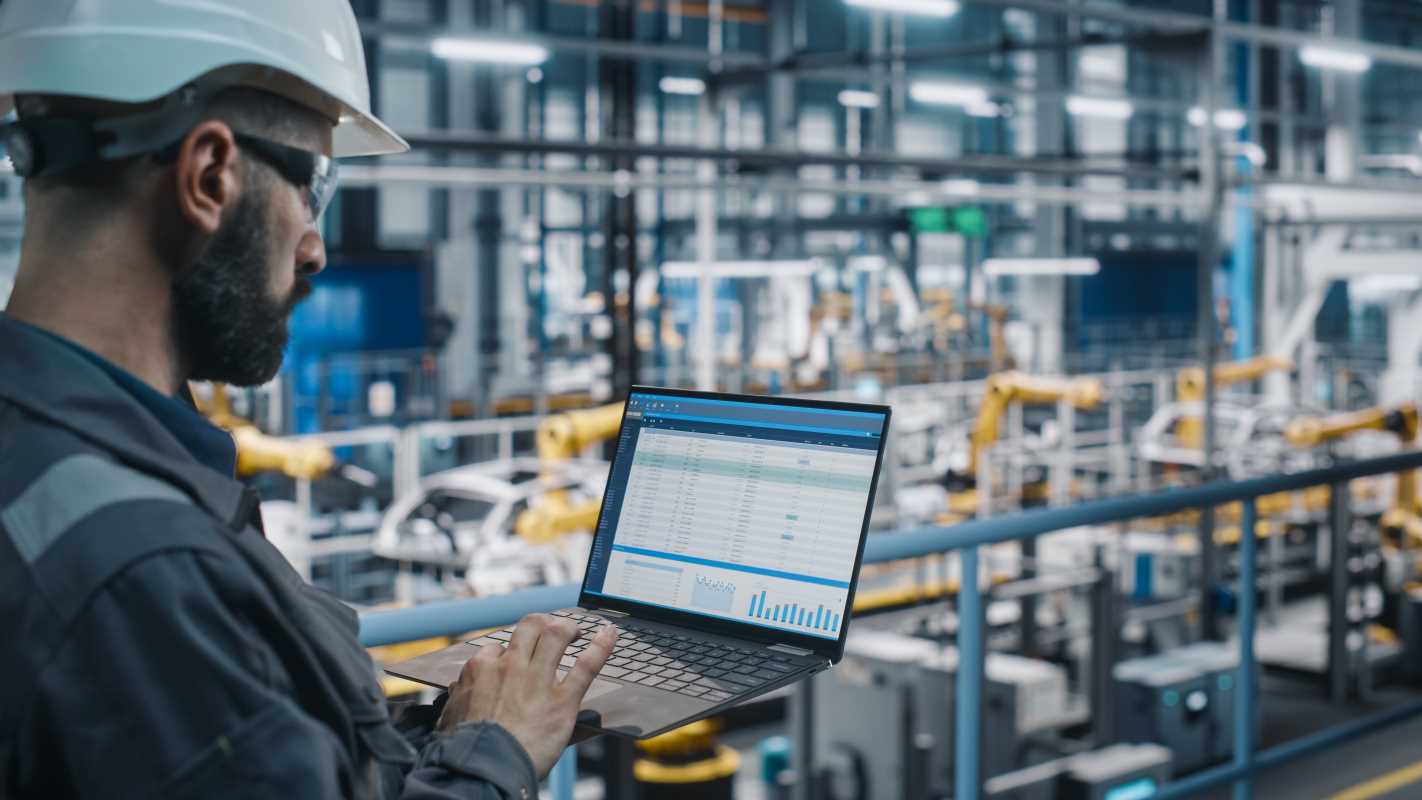Factories rely on teams who manage tight deadlines and operate advanced machines every day. Predictive maintenance uses data analysis to spot early warning signs of equipment issues, allowing teams to address them before breakdowns disrupt production. As a result, companies see fewer unexpected delays, spend less on emergency repairs, and maintain efficient operations. With artificial intelligence, these benefits become even more accessible, helping teams quickly detect and resolve problems. This guide shows how to bring artificial intelligence into your maintenance routine in clear, straightforward steps, making the process easy for everyone to understand and apply.
What Is Predictive Maintenance?
- Condition monitoring: Sensors record vibration, temperature, and other signals in real time.
- Data analysis: Algorithms examine sensor feeds to find patterns linked to early wear and tear.
- Failure prediction: Models estimate when components might break or underperform.
- Action triggers: Teams schedule repairs only when they actually need service.
Traditional maintenance often follows a fixed schedule or waits for breakdowns. Predictive maintenance changes that by using data to drive decisions. When you constantly monitor machines, you stay a step ahead of unexpected stops.
How AI Transforms Maintenance Processes
Introducing AI into maintenance combines advanced analytics with sensor data. Instead of reacting to alarms, you teach models to detect small changes that hint at future issues. Those adjustments in vibration or temperature can indicate loose bearings or misaligned belts.
Many manufacturers set up AI pipelines that stream data from devices directly into a platform. Once models train on historical trends, they automatically flag anomalies.
Steps to Implement AI for Predictive Maintenance
1. Define Your Goals and Scope
- Identify the equipment and performance metrics you’ll monitor.
- Prioritize high-impact assets such as central conveyor belts or critical pumps.
- Set measurable objectives—like reducing downtime or extending part lifespan.
2. Install Sensors and Collect Data
- Mount vibration, temperature, and current sensors on key components.
- Ensure continuous data capture with sufficient storage and backup systems.
- Standardize data formats to simplify later analysis.
3. Select Algorithms and Tools
- Begin with accessible models such as regression or decision trees.
- Use open-source libraries built for time-series analysis (e.g., scikit-learn, TensorFlow, Prophet).
- Keep the model explainable for maintenance teams who’ll act on its insights.
4. Train and Test Models
- Feed historical sensor data into your AI framework.
- Compare predictions to recorded failure events to measure accuracy.
- Split data into training and validation sets to prevent overfitting.
5. Deploy and Set Up Alerts
- Integrate model outputs into your maintenance dashboard.
- Configure alert thresholds for early intervention.
- Route notifications directly to technicians through email or mobile apps.
6. Monitor Results and Improve
- Track false positives and missed detections to refine models.
- Add new sensor data—like power usage or acoustic signals—for greater precision.
- Schedule quarterly reviews to recalibrate models as machines age or workloads shift.
Following these steps keeps you on course and helps you develop reliable predictions instead of chasing flashy demos.
Best Practices and Tools
Start small by focusing on one production line or a few machines. That approach lets you learn how AI behaves with your setup before expanding across the plant. Document each step: sensor placement, data cleaning methods, model versions. Clear records help when troubleshooting or scaling later.
For sensor networks, solutions like Siemens Mindsphere or PTC ThingWorx provide ready-made connectors and simple dashboards. On the analytics side, Python frameworks such as scikit-learn and TensorFlow handle most predictive tasks. If your team lacks in-house AI expertise, cloud services from providers like Microsoft Azure and Amazon SageMaker offer guided workflows. Combine tools based on your team’s skills and budget.
Measuring Success and ROI
Track these metrics to demonstrate value quickly:
- Reduce unplanned downtime hours per month
- Save on maintenance costs by avoiding unnecessary service calls
- Increase machine availability percentage
- Achieve return on investment (ROI) within a set period, such as six months
Run A/B tests by keeping one line on traditional schedules and another with AI-driven alerts. Compare how they perform in real time. Collecting before-and-after data helps you show stakeholders tangible benefits.
Don’t overlook softer wins. Technicians appreciate focused work orders instead of endless checks. Engineers gain more time to improve production quality instead of scrambling on emergency repairs. Those boosts in morale often lead to smoother operations.
Getting AI-powered predictive maintenance up and running might feel like a big step. Break it into manageable parts and choose user-friendly tools to set yourself up for steady progress. Small improvements add up, reducing repair budgets and keeping lines moving.
Once you see initial benefits, expand your efforts to improve plant management. Using AI to identify issues early becomes essential for efficiency.
 (Image via
(Image via





